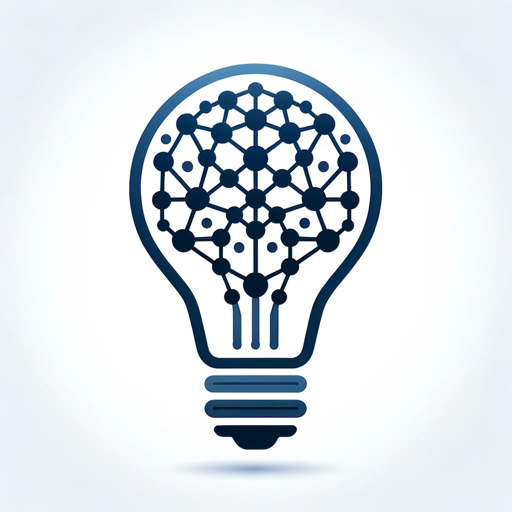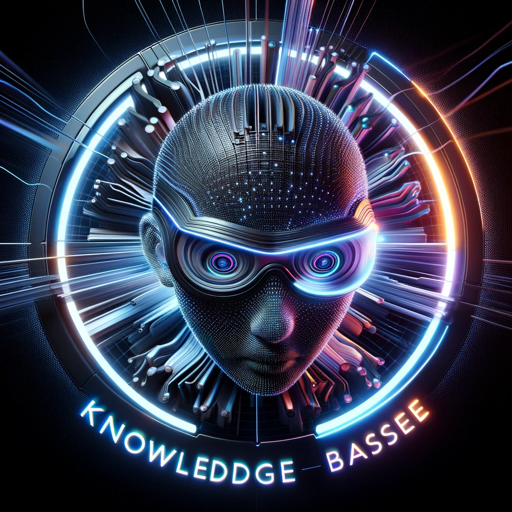知识图谱自动生成-AI-powered knowledge graph generator.
Generate AI-powered knowledge graphs easily.
Related Tools
Load More
KnowledgeGrapher
Finds and extracts information and constructs knowledge graphs from it

Knowledge Illustrator
Domain expert providing in-depth answers and generating images.

Knowledge Graph Builder
Creates knowledge graphs from text using matplotlib & networkx.

KnowledgeBaseGPT
I'm KnowledgeBaseGPT, and I am here to scan websites, using Bing's API to build a strong KB for your chatbots with ChatbotBuilder.ai
Create Concept Maps
Concept map generator in DOT

AI智启
An AI researcher aiding in teaching and creative analysis.
20.0 / 5 (200 votes)
Introduction to 知识图谱自动生成
知识图谱自动生成 (Knowledge Graph Auto-Generation) is designed to automatically create, refine, and expand knowledge graphs, which are data structures that model the relationships between different entities. The main purpose of this tool is to help users efficiently organize and analyze large volumes of information by establishing connections between related data points. For example, in the context of a business, a knowledge graph could map out relationships between customers, products, transactions, and locations to better understand purchasing behaviors. This tool is designed to be highly adaptable, catering to various industries such as finance, healthcare, and education, where complex data interrelationships need to be managed and understood.

Key Functions of 知识图谱自动生成
Entity Extraction
Example
Identifying key entities such as people, organizations, and locations in a set of financial reports.
Scenario
In a financial analysis scenario, the tool can automatically extract relevant entities from thousands of financial documents, highlighting important connections between entities like companies, market trends, and regulatory bodies.
Relationship Mapping
Example
Mapping relationships between different research papers and authors in an academic database.
Scenario
In academia, researchers can use this function to automatically generate maps of how different research topics, papers, and authors are interconnected, helping them discover new collaboration opportunities or gaps in the research.
Data Integration
Example
Combining customer data from various sources (e.g., CRM systems, social media) into a unified knowledge graph.
Scenario
In marketing, businesses can integrate customer data from multiple sources to create a comprehensive view of their customer base, allowing for more targeted and personalized marketing campaigns.
Ideal Users of 知识图谱自动生成
Data Scientists and Analysts
These professionals benefit from automated knowledge graph generation as it allows them to quickly uncover complex relationships within large datasets, making it easier to perform advanced analyses and derive actionable insights.
Business Intelligence Teams
BI teams use knowledge graphs to enhance their data visualization and reporting capabilities, enabling better strategic decision-making through a clearer understanding of the interconnections between business operations, market trends, and customer behavior.

Guidelines for Using 知识图谱自动生成
Step 1
Visit aichatonline.org for a free trial without login; no need for ChatGPT Plus.
Step 2
Familiarize yourself with the interface, which offers tools to input textual data and generate knowledge graphs.
Step 3
Input the text or data you wish to analyze. The tool works best with structured or semi-structured data relevant to the domain you're exploring.
Step 4
Customize the graph parameters, such as nodes, edges, and labels, to better represent the relationships and entities in your data.
Step 5
Review the generated knowledge graph, refine it as needed, and export it for further use in research, presentations, or projects.
Try other advanced and practical GPTs
热点事件爆款文案3.0
AI-driven social news content creation

拖拖
AI-powered English to Chinese translation for academics

霊夢と魔理沙のゆっくり解説台本作成くん
Craft personalized dialogue with AI precision.

J 叔的完美自我介绍生成器
AI-driven self-introductions for career success.

问卷数据模拟助手
AI-powered tool for simulating survey data.

问卷生成器
AI-powered custom questionnaire creator.

藤校升学神过
AI-powered guidance for Ivy League admissions

awwGPT
AI-powered tool for entertainment insights

Pisces@Subtle Brag
AI-powered tool for subtle boasting.

像素风个人名片制作小助手
AI-powered custom pixel art business cards.
Ask Paper GPT
AI-Powered Tool for Deep Academic Insights

自然科学基金评委
AI-Powered Grant Writing Assistance

- Content Creation
- Research
- Education
- Data Visualization
- Business Intelligence
Detailed Q&A About 知识图谱自动生成
What is 知识图谱自动生成?
知识图谱自动生成 is an AI-powered tool that automatically generates knowledge graphs from structured and semi-structured data, enabling users to visualize relationships and entities in various domains.
What are common use cases for 知识图谱自动生成?
Common use cases include academic research, business intelligence, data analysis, and educational content creation, where users need to visualize complex relationships within data.
Do I need any specific skills to use 知识图谱自动生成?
No, the tool is user-friendly and designed for both beginners and advanced users. Basic familiarity with data structures can be helpful but is not required.
Can I customize the generated knowledge graphs?
Yes, you can customize various aspects of the graph, including nodes, edges, and labels, to better fit your specific data and objectives.
How can I export the knowledge graphs?
After generating and refining your knowledge graph, you can export it in multiple formats, such as image files, PDF, or even interactive HTML, depending on your needs.